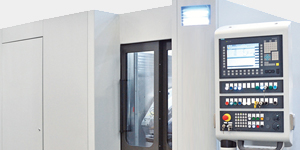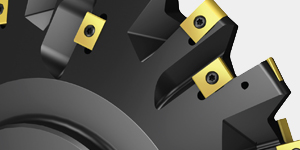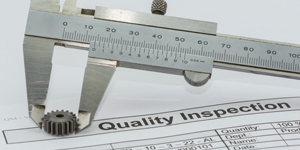What is gear skiving?
Gear skiving is a process for cutting slots on a gear, a challenging operation that requires high accuracy. Manufacturers need to achieve high accuracy while being as productive as possible, cutting slots fast.
Why should manufacturers consider gear skiving vs. other cutting methods?
Gear skiving on a mill/turn machining center with fully synchronous spindles is highly efficient, fast, and accurate. In some cases, when producing small- and medium-size volumes, gear skiving will gradually replace established gear-cutting processes. Traditional gear cutting processes include broaching, shaping, hobbing, or using a specialized end mill. Although effective, each of these methods has disadvantages.
Broaching requires special broaching machines that are very expensive and difficult to set up. Each part has to be set up individually, which can take multiple hours. Depending on the complexity of the part, each broach can cost thousands of dollars.
Shaping is an older method of skiving without spindle or part rotation. Shaping is essentially broaching but using a circular tool. As with broaching, shaping requires a specialized shaping machine.
Hobbing is a very efficient way of machining gear teeth but the main downside is having to use a specific hobbing machine. Also, the hobbing cutter can be very expensive.
A special-form end mill may be used to cut gears for applications where skiving cannot be applied because it does not involve the ID or OD of the teeth, but this strategy can only cut one tooth at a time. When using an end mill, you can use the same machine and setup for other features on the part. One advantage of this strategy is that it can be used on gear teeth that cannot be machined in other ways.
What are the considerations for implementing gear skiving?
To get started with gear skiving, the right tooling is required, which can include a custom-designed solution for your specific application needs. A gear-skiving wheel should work on internal and external gears. This can be either a shell tool or a shank tool comprised of HSS or carbide. After the skiving wheel has been designed based on a 3D drawing and the part, the skiving process can be simulated to show the wheel passing through a tooth gap in the gear. In this first step, penetration occurs and results in interlocking and cutting. Then the adjusting screws can be turned until the skiving wheel is geometrically defined.
During the design process, collision checks are performed to produce a tool drawing with all the required parameters ranging from the number of teeth to the axis cross angle, to the recommended machining speeds and feeds. It is important to adhere to these specifications because, while deviations from the specified machine speed may not immediately lead to a collision, the gear-cutting quality and result would surely degrade.
Once the tool design has been determined, the skiving tool can be produced. Manufacturing the skiving tool to integrate it into a demanding gear-cutting process requires tactile measurement technology. In addition to optical measurement, your cutting tool manufacturer may use a special sensor probe to measure with high accuracy the proper gear geometry. The sensor probe is a precise, safe, and repeatable method for inspecting the gear-skiving wheels and for scanning and evaluating the complete gear profile.
What makes the EMUGE power skiving products ideal for gear skiving?
EMUGE-FRANKEN offers gear manufacturers a single source for a full range of skiving tool solutions including wheels for internal and external gears as bell-type or shank tool variants in the module sizes m0.4 to m5, as well as tool and workpiece clamping solutions. EMUGE-FRANKEN produces high-precision skiving tools on state-of-the-art tool grinding machines with appropriate grinding software. A measurement report and corresponding technology data are supplied with every delivery of skiving tools. The data sheet includes all the necessary machining parameters, including recommended rotational speeds, machining time, infeed strategy, and cutting coordinates for each cut. This data sheet essentially provides manufacturers with a tested process to follow for optimal results.
Application specialists are available to assist with the initial use of the tools, and tool repair is also offered.
EMUGE-FRANKEN skiving tools can be used in a variety of gear applications including the production of ring gears, shafts with internal and external splines, and splined shaft profiles. EMUGE-FRANKEN skiving tools have no restrictions regarding the material to be machined and are highly suitable for the soft machining of internal and external gears, as well as hard machining. The skiving tools can be used on turning/milling centers with B or A axes (swivel axes).
Also, the EMUGE-FRANKEN clamping division specializes in providing highly accurate, almost maintenance-free customized solutions for applications, ranging from low-volume job shops to high-volume automotive production environments. EMUGE-FRANKEN designs and develops optimal, often complex, clamping solutions by working closely with its customers to learn about the unique application challenges and production environments.
More info: www.emuge-franken-group.com/us/en/skiving/a/Skiving

































